Good Reason
It's okay to be wrong. It's not okay to stay wrong.
Author: Daniel Midgley (page 2 of 126)
So I was just on a panel with author John Scalzi at Swancon. Great fun, good panel, good questions from the audience.
The panel was about skepticism and sci-fi, and one of the questions was, “Why do skeptics have such a bad reputation?” Why are they known as contentious, awful people?
John’s answer was essentially: Because they are unpleasant people. Paraphrasing: If debunking really Does It for you, then you’re probably a Stomper of Dreams.
As an unpleasant person, I have to kind of agree, but my answer went like this: There’s really no nice way to say, “Um, actually, that psychic isn’t really speaking to your dead relatives.” Saying it at all makes you the Dreamkiller, and that’s that. Either that, or you say nothing, in which case no one knows you’re a skeptic at all. Result: all skeptics are mean and unpleasant.
But I think there’s a third answer here: Popular entertainment has spent decades portraying skeptics as soulless or incomplete. Just check TV Tropes. Skeptics are Straw Vulcans — hyper-rational beings who are nonetheless incomplete and dead inside. Then they ‘come to their senses’ and become a Skeptic No Longer. Only when their character arc sees them learning to embrace at least a little unprovable bullshit do they become good and fully human. I think it’s a minor factor, but not an insignificant one.
Loads of creative people are using my typefaces, and I love to give shout-outs. So here’s the latest.
• First up, Mark has a great blog and YouTube channel about language, called “The Endless Knot”. He breaks down the origins of English words in a way that’s fascinating and easy to watch. And what’s he using? Why, it’s Du Bellay, the weathered and antique font with the renaissance feel.
Looks great; makes you smarter. What’s not to love?
• Next, it’s Jenifer Brady, the author of Camp Spirit Fiction. She’s used the Daniel font on her website and books, and it gives it a campsite feel. Sit up close and smell the smores!
• There’s a new game that makes extensive use of the Daniel font. It’s called Pigments, and it gives you a chance to play with colour mixing. I love the papery feel. And look at that logo!
• Sirade is working on some manga. The blog is here. Keep going, Sirade!
• And finally, James has used the Daniel font in the logo for his website ‘Mind‘, and it’s looking quite sharp.
Thanks to everyone for using my work! It’s very encouraging. You can download these fonts for free on the Page of Fontery. If you make something cool, send me a link.
I’ve just read that a Muslim cleric — the aptly-named Kamal Mousselmani — has denounced “fake sheiks” in the wake of the Sydney siege. He thinks it’s too easy to call oneself a religious authority. Fancy that. He comments on the Sydney hostage-taker who claimed to be a religious authority, and says, essentially, “He wasn’t a proper one.”
More and more, I’ve been hearing moderate Muslims say that fundamentalist Muslims or extremist Muslims are “un-Islamic”. Sometimes they go full Scotsman: “That’s not real Islam.”
On one level, I’m glad to hear that Muslims are denouncing violence. That’s very positive. This needs to happen — not just in Western countries, but everywhere — for human survival on Earth to continue. And I stand with Muslims who are my friends, co-workers, and students, even as I find their religion to be just as nonsensical as all other religions.
But for a Muslim to flatly disclaim other versions of Islam as “fake” or “not Islam” is disingenuous. What makes this imam so sure that his moderate reading of Islam is the right one, and fundamentalists have it wrong? The fundamentalists can quote scriptures in their defence, just as the moderates can; everyone picks their favourite cherries. This is religion we’re talking about, and one of the things about religion is that it doesn’t offer a good way of telling who’s doing it right and who’s doing it wrong.
See, with science, reality is the court of final appeal. But religion doesn’t get its data or practices from reality, so reality can’t be appealed to when there’s a schism. All the parties can do is excommunicate each other and move on. That’s what we’re seeing here with this disavowal. But moderates can’t just say “That’s not Islam” and then keep going as if the extremists don’t exist. The book that they think is so wonderful and peaceful is the same book that the encouraged the extremists to commit violence in the first place. The good guys? That’s Islam. The bad guys? That’s Islam, too.
This kind of denunciation is also self-serving. A religious leader denounced his competition as fake? Gee, never seen that before. In part, this imam is trying to make sure that the image problem generated from Islamic-motivated violence doesn’t affect him. I get why he’s doing it, but it’s ass-coverage all the same. It also prevents that pesky need for any self-analysis. You don’t have to grapple with the problematic part of your faith or history if you just wall it off and say it doesn’t apply to you. How much better it would be to say, “There are things in the Quran and the Hadith that do encourage violence, and we need to be aware of this to make sure we don’t go down that road.”
I don’t want to come down too hard on someone for not wording things exactly the right way when they’re saying the right thing. I’m encouraged that many Muslims are disavowing violence. (Welcome to the 19th century.) I hope they succeed in reining in the worst behaviours of the Muslims who are — whether they like it or not — their co-religionists. But by saying “That’s not Islam”, moderate Muslims are copping out, not stepping up.
This year I’m doing my annual music review by the numbers. I figure my favourite albums are the ones I’ve actually listened to the most, so here I’m ordering them by average play count, according to my scrupulously kept iTunes stats. Merciless, unbiased statistics!
This isn’t to say that the albums I’ve listened to the most are the best, or even that they’re my favourites. There are some fairly new albums that I haven’t had time to get into yet (but I’ll add those at the end). There are also some great albums that, for one reason or another, I rarely feel like playing. But in general, the principle holds: if I’ve played it a lot, it probably has something to do with how much I like it. And doing it this way removes the temptation to try and appear cool by recommending albums I haven’t been listening to. You might find some of my guilty pleasures, as well.
I’m releasing these by fives, so new updates will be at the bottom.
 25
25
Hotel Valentine by Cibo Matto
Average 4.8 plays per track
A most welcome return to form from these two. It’s been far too long.
Cibo Matto brings its usual sense of fun and zaniness, but this time it’s framed by a visit to a hotel, from check-in to check-out. There are parties, banter from the housekeeping staff, and a ghost girl who appears mysteriously throughout.
Standout tracks include “Empty Pool” and “10th Floor Ghost Girl”.
 24
24
Mandatory Fun by “Weird Al” Yankovic
Average 5.3 plays per track
Even though I’ve enjoyed his work off and on since the 80s, I’ve never really had a “Weird Al” phase. But then I guess this album has attracted a lot of new fans. It went to #1 on the Billboard charts; the first comedy album to do that in fifty years.
“Weird Al” songs fall into three broad categories: polka medleys (“Now That’s What I Call Polka!”), songs that parody the style of other artists (“My Own Eyes”, “Mission Statement” , “First World Problems”), and straight parodies of existing songs (“Word Crimes”, “Tacky”, “Foil”). These latter are useful because, really, did you want to buy the original?
There are laughs to be had throughout, but the real accomplishment here is “Jackson Park Express”, a brilliant Cat-Stevens-style story of a romance that plays out through meaningful glances across the aisle of a bus. But also great is “Word Crimes”, which I discussed in two recent episodes (170 and 171) of Talk the Talk.
 23
23
Opening by Christopher Willits
Average 5.4 plays per track
I’ve always enjoyed Christopher Willits’s clicky-yet-smooth ambient style, so I had high hopes for this album. I haven’t listened to it as much as I thought I would, though. It’s pleasant enough, but it’s all a bit indistinct for an album that should be his big breakout. It does benefit from the influence of Scott Hansen of Tycho.
I think I just need to put this one on at work more often.
 22
22
You’re Dead! by Flying Lotus
Average 5.5 plays per track
Endlessly inventive and active. This may be the best album on my list, but for some reason I find it exhausting and more than a little bit grim, which is why I rarely reach for it. It’s my problem, I know.
One good memory though: I was waiting for the lunar eclipse earlier this year, sitting on my roof for a better vantage point, and listening to this album. It was so insane and enveloping that I thought I could fly. Good thing I didn’t try it.
Love this video, too. What fantastic young dancers.
21
Brand New Love by The Go Find
Average 5.7 plays per track
There’s something odd about every Go Find album (and no, we’re not talking about OK Go). The songs are enjoyable, and I can listen to them a lot, but I can never remember the tunes when the record stops. This album is no exception.
I do remember one thing, though: that damn saxophone on “Japan”. Is there any pop song a sax can’t ruin? It cemented my hatred for that instrument on everything but jazz and ska.
19 (tie)
Shriek by Wye Oak
Average 6.4 plays per track
I first ran across Wye Oak when they did their cover of Kate Bush’s “Running Up That Hill”. Watching the clip, I was impressed by Andy Stack playing the drums with one hand and the keyboards with another, but what stands out on this album is Jenn Wasner’s voice, which makes me think of Annie Lennox. The songs seem simple, but can take unexpected and deeply involving turns, as with the title track.
19 (tie)
Sylvan Esso by Sylvan Esso
Average 6.4 plays per track
It’s fitting that these two albums appear side by side, because they’re very much of a piece. Sylvan Esso is Amelia Meath (of Mountain Man) and Nick Sanborn (of Megafaun). Again, electronica merges with listenable songwriting. “Coffee” is one of my favourite songs this year.
18
Barbara Channel 3 by Tom Ellard
Average 7 plays per track
You know Tom Ellard from Severed Heads, and if you don’t, you should. Though he’s turned in his Severed project for an academic job, he still can’t stay out of music, and Barbara Island series is the kind of music he wants to make now.
And what music. Is it ambient? Maybe — it’s certainly good to work to — but there’s enough of an edge to remind you who’s in charge here.
17
Saudade by Thievery Corporation
Average 7.5 plays per track
This is, if not the album ThievCorp was born to make, certainly a very comfortable addition to their collection. This album gives a Latin spin to their chilled-out grooves, and when you’re in the mood, it’s the only thing that will suit.
16
Syro by Aphex Twin
Average 7.9 plays per track
It’s great to have a new AT album after so many years, especially when the artist brings his consummate skill to every track. As famously prickly as Richard D James is, this is a surprisingly accessible album, and seemingly polished to a sheen.
 14 (tie)
14 (tie)
Black Coral Sprig by Talk West
Average 8.3 plays per track
Introspective ambient guitar from Oklahoma’s Talk West. I would start the album, and — oh, look — another hour’s gone by. Utterly enveloping.
14 (tie)
1979 by Deru
Average 8.3 plays per track
For a Deru listener, this album comes as a bit of a surprise. There’s not a beat to be found. It’s all texture, and the texture is dark and warm, fuzzy analogue. Maybe I’m too suggestible to titles, but 1979 is a good year to describe the mood here. For me, 1979 was sitting in suburban houses, waiting for something to happen, everybody somewhere else. Yes, very apt.
13
Buffalo Buffalo [EP] by Soop
Average 8.6 plays per track
You might get stuck on “Ostrich of War” because it’s a fabulous glossy piece of music, but you also need to hear what awaits on the other tracks: dreamy pop tunes suffused in John-Hughesy nostalgia. These are tremendously talented guys who don’t take themselves or their music too seriously.
12
Everyday Robots by Damon Albarn
Average 9.8 plays per track
This album reached me in a way that very little else has in Albarn’s catalogue. Boy, is it bleak. Its opening line is a perfect way of describing weary commuters on the bus. “We are everyday robots on our phones / In the process of getting home”. The rest of the album has a similarly exhausted feel, and there’s a really deep sadness that settles over it, despite the attempts of “Mr Tembo” to keep things light. But despite that, the tracks really are beautiful, and they have a depth that sustains many listenings.
11
Our Love by Caribou
Average 11.3 plays per track
What’s going on with Caribou? Last we heard, Dan Snaith had eschewed the sunshiny pop of Andorra for a solid dance groove on Swim. Our Love keeps going down this same road, but with an even more marked — dare I say younger? — EDM sensibility. There’s something of a summertime vibe, too. Going for the youth festival crowd? Who cares, when the groove sounds like this. You just have to realise that he knows what he’s doing.
10
Atlas by Real Estate
Average 11.5 plays per track
Love this album. I don’t think anyone else today has quite their sound, except perhaps The Ocean Blue. Rockish, but not too much, with gentle reminiscences folded in.
As a music guy, I like how together they seem. Even when there are tempo changes, they’re locked in together. As an example, try “The Bend”, which breaks into a wonderful wide-open coda.
9
Passerby by Luluc
Average 11.9 plays per track
The cover of this album is a good guide to the contents. Luluc is good music for curling up with a cat on a sleepy afternoon. (In fact, the artwork is done by singer Zoë Randell’s sister Fleur, and it’s a photo of Zoë, age 5, and the family cat.)
One of the highlights of the year for me was Luluc’s gig at the 4Five9 bar, which is tiny. It was just Zoë and Steve, weaving their folky magic. Chatting with them afterward was fun, too.
Luluc is just about perfect.
8
Morning Phase by Beck
Average 12.8 plays per track
Calling this album Sea Change 2 is missing the point. Beck’s not redoing an album, but rather revisiting one of his modes (and we’re lucky he has so many great ones to visit). What’s different about this album is the luminosity Beck brings. Every track is covered in dappled sunlight, except for ‘Wave”, after which you might need a hug.
7
Reachy Prints by Plaid
Average 13.2 plays per track
Some albums are on this list because I’ve listened to every track over and over again, and then some are here because one amazing track has dominated my listening. This album is one of the latter. It’s great all the way through, but the standout track is “Hawkmoth”. Probably track of the year.
6
Arterial by Lusine
Average 13.8 plays per track
A Lusine release is always welcome (and in fact I missed last year’s excellent The Waiting Room). Jeff McIlwain has done it again; smooth grooves and subtle beats.
5
The Nightday by ZHU
Average 15.5 plays per track
So I’m at the Listen Out festival in Perth with Oldest Boy. There’s a bit of a gap before Flume, so we decide to stay in one place and check out Zhu. I’ve never heard of Zhu, and I’m not likely to find out who he is; a screen comes down to obscure his identity. (The Internet thinks he might be electronic musician Steven Zhu; so much for anonymity.) As the projection show starts, I do note that I’m familiar with his Z-flag device, which I love; I’m a sucker for a great graphic concept.
When the music starts, though, it’s all different. Oldest Boy and I realise at once that not only is Zhu’s music danceable, it’s moody, extremely stylish, and polished to a sheen. Never mind that it’s a bit more for the younger folks; this is someone who really has their sound together. I haven’t stopped listening since.
4
Salad Days by Mac DeMarco
Average 18 plays per track
Another artist that Oldest Boy told me about. It’s odd finding out about Mac DeMarco. You think, “Who is this gap-toothed Canadian youngster?” Then you put the album on, and you realise, “This is someone who knows how to music.” Behind the strange instruments and odd production, true talent shines through. I’m a fan, and I hope he does a lot more.
3
Tomorrow’s Modern Boxes by Thom Yorke
Average 21.3 plays per track
Thom Yorke has another solo album? Nigel Goderich produced it? Then sign me up. I’m a bit atypical in that I’ve always preferred Yorke’s solo material to Radiohead, just because it’s a bit more on the smooth ambient side, and that’s how I roll. I feel like this album has been flying under the radar for a lot of people, which is a shame because it contains one of the most compulsive tracks I’ve heard in a while: “Guess Again!” which did actually throw the average playcount for this album up a bit.
2
Psychic 9-5 Club by HTRK
Average 21.5 plays per track
A friend recently asked me if I could suggest any good sex music, and without thinking, I named this album. HTRK’s music is often described as David-Lynchian, which in this case evokes Mulholland Drive more than Twin Peaks; the tracks drip with hypnotic urban neon.
I think this is something close to a perfect album.
1
Awake by Tycho
Average 31.6 plays per track
Back in the solo days of “Dive”, Scott Hansen (another graphic designer) wore his Boards of Canada influences on his sleeve. But since making his touring band his actual band, Tycho has grown into an amazing new sound. The decayed analog is still there, but now it’s combined with guitar and drums to create something altogether more muscular and invigorating. It’s a fantastic summertime sound. I coud never get tired of it, which is why Awake has been in my ears far and away more than any other album this year.
There’s really only one person who qualifies as a living legend in skepticism, and it’s James “The Amazing” Randi. For decades, he’s performed magic and taken the hairbrush to spoon-benders, psychics, and faith healers. A bit of background if you’re unfamiliar with his work.
He’s also behind the “Million Dollar Challenge“, in which anyone can walk off with a million bucks if they can do supernatural feats under controlled conditions.
Last week marked Randi’s first visit to Perth as part of his “An Evening With James Randi” tour with Think Inc. Since the UWA Atheist and Skeptic Society was helping with arrangements, five of us took up the invitation to meet Randi at the airport.
Randi is 86 now, but he was in surprisingly good spirits despite what must be a grueling touring schedule. He was wheeled by members of his entourage, which included Richard Saunders of the Skeptic Zone podcast. With luggage collected, we headed to the nearest airport Dome café for some refreshment.
While we were chatting, Richard Saunders took a banknote (Mongolian, I believe he said) and split it up into two perfect squares. With one, he folded an origami pig with wings. Pigasus is his own creation. I hadn’t realised he was an origami expert. Very cool!
Ever the performer, Randi delighted us with some cigarette magic using the rolled-up other half of Richard’s banknote. Pretending to push the roll into his other hand, he palmed it instead, making it seem to disappear when the expected hand was empty.
This is the general idea:
I’ve always loved magic, but I’ve never done the sleight of hand. What I love is how magicians exploit our expectations, and make us realise how bad our assumptions can be. Important lessons for skeptics, to be sure, and probably the reason that magicians are the greatest skeptics.
There was a question on my mind. I asked Randi, “Have things changed? It used to be that in the 70s, we’d be fighting astrology, pyramid power, and Bigfoot. Now, we fight…”
“…pyramid power!” said Richard.
“Yes, exactly,” I said. “But now we also have homeopathy, anti-vaxxers, and Bigfoot. Are things moving?”
Randi thought not; people still believe a lot of the same nonsense they always have. Trying to quote accurately here: “If you go to some of the most backward places on Earth, you find people believing the same things that have since before I was around.”
It’s true. Psychics today use the same techniques they’ve used for a hundred years. It’s all a bit dispiriting. If we’re just confronted with more new nonsense along with the old nonsense, then what keeps us going?
Perhaps if there’s a bright spot, it’s this: We no longer fight alone. There’s now an organised skeptical movement taking on fakes, fools, and folly. And we have James Randi to thank for that.
I recently interviewed professor of neuroscience Thalia Wheatley for an episode of Talk the Talk, but at the tail end of the interview, I threw her a curveball and asked her about free will. I’ve been trying to understand this for a long time. Do we choose something, or does our brain just… do it? And if it does, what does that mean?
Here’s that part of our conversation.
Your browser does not support this audio
If you want some prep, here’s a video of Thalia with actor Alan Alda.
The rest of our interview will be appearing in an episode this August. Watch for it!
Stephan Wagner is using the Daniel font to show his travels all over the world. It gives his site a cool ‘diary’ feel.
I’m a sucker for books that use Yataghan, and here Pete Mahr has used it to psychotically good effect on his eBook festival. Get it here.
© 2025 Good Reason
Theme by Anders Noren — Up ↑





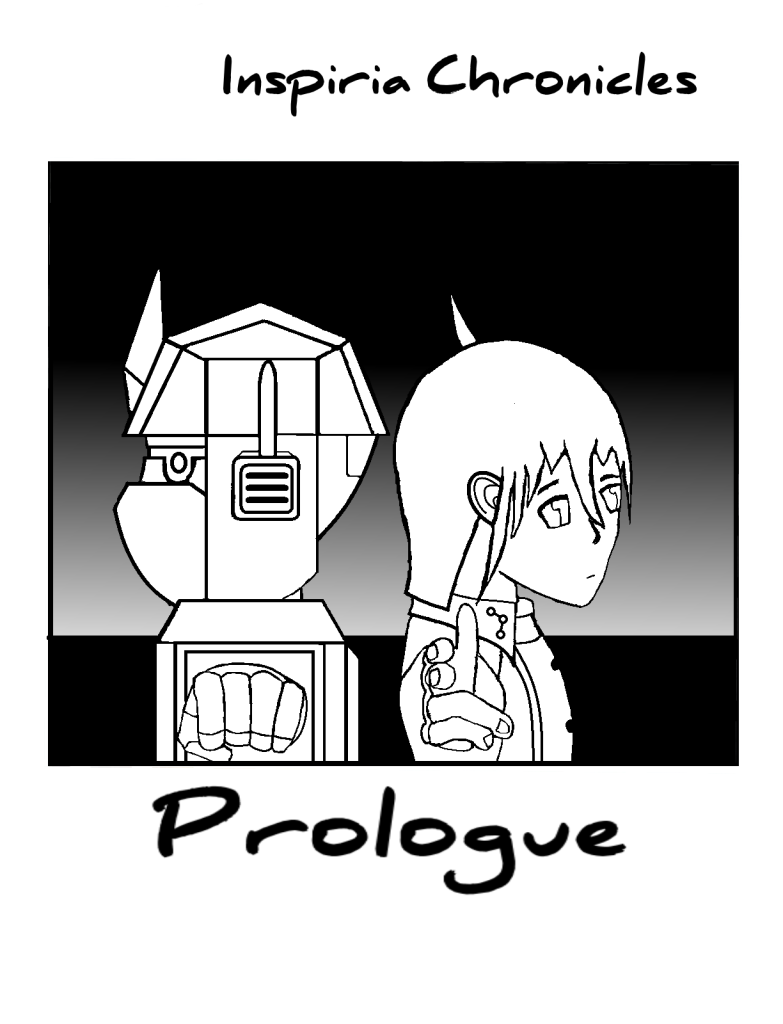








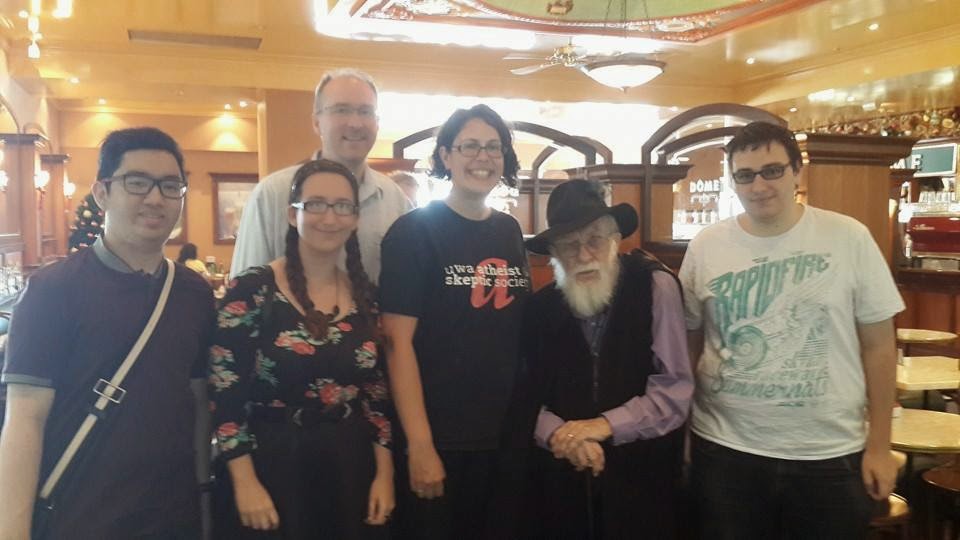







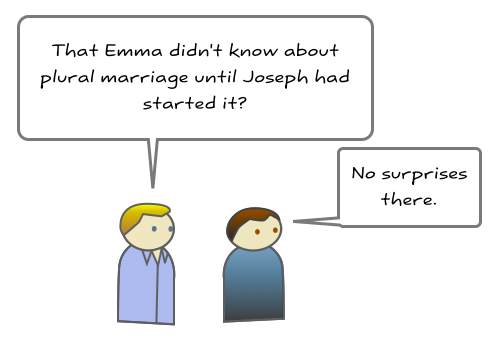





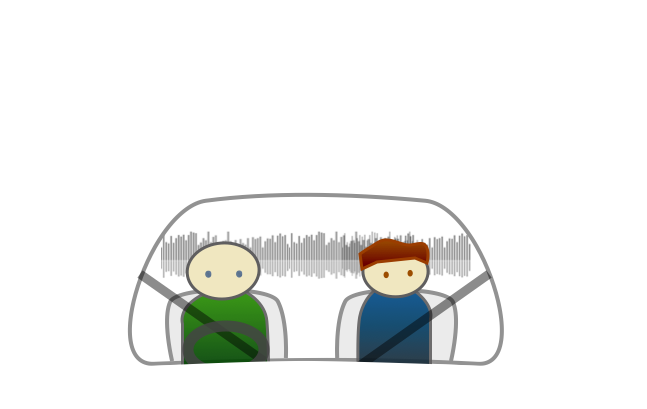

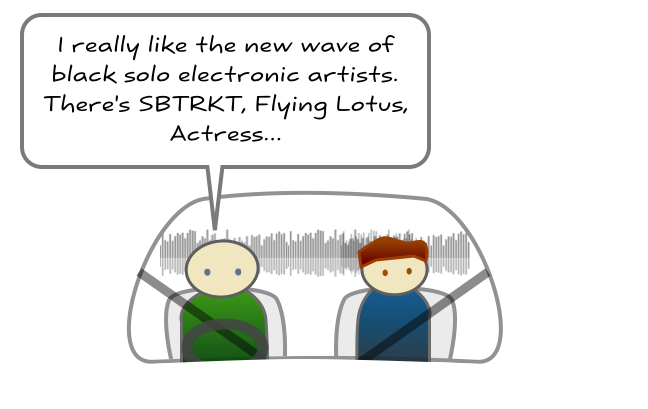







Recent Comments